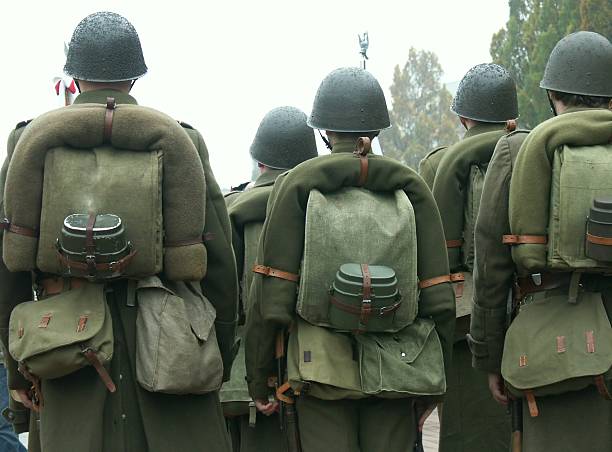
The Evolution of WW1 American Uniforms: History, Features, and Legacy
Published on Feb 21, 2025
WW1 American Uniforms: The Iconic Doughboy Attire
Introduction
World War I marked a significant transformation in military uniforms, particularly for the United States Army. As American soldiers—known as "Doughboys"—joined the battlefields of Europe in 1917, they wore uniforms that balanced practicality, protection, and national identity. The WW1 American uniform was distinct from its European counterparts, evolving in response to battlefield needs and technological advancements.
This article will explore the design, features, and historical impact of the WW1 American uniform, shedding light on how it shaped modern military attire.
1. The Transition from Blue to Olive Drab
Before WWI, American soldiers wore blue uniforms reminiscent of the Civil War era. However, as warfare modernized, the need for a more practical, camouflage-friendly colour became apparent. In 1902, the U.S. Army officially adopted olive drab (OD) and khaki as the primary colours for combat uniforms. By the time the U.S. entered WW1, soldiers were clad in OD wool uniforms that provided better concealment on the battlefield.
2. Key Components of the WW1 American Uniform
A. The M1917 Helmet
The Brodie helmet, also known as the M1917 helmet, was a steel helmet introduced to American troops upon entering WWI. Based on a British design, it offered limited protection against shrapnel. Still, it was a vast improvement over the soft campaign hats previously worn by soldiers.
B. The Service Coat and Trousers
The standard M1917 service coat was made of wool serge, featuring a high collar, four large front pockets, and bronze buttons embossed with the U.S. eagle insignia. Soldiers also wore wool breeches, which were tapered to fit inside their leggings or puttees.
C. The Puttees and Leggings
Puttees—long strips of wool wrapped around the lower legs—were standard issues for U.S. soldiers. They provided extra support, protection from debris, and warmth in cold conditions. Later, canvas leggings replaced puttees for added durability.
D. The Boots
The M1917 trench boots, also called "Pershing boots," were an essential upgrade from previous footwear. Made of sturdy leather, they provided better traction and water resistance, crucial for soldiers in muddy trenches.
E. The Gear and Equipment
American soldiers carried essential gear, including:
- M1910 haversack (backpack) for rations and supplies
- M1910 canteen for hydration
- M1903 Springfield rifle or M1917 Enfield rifle as primary weapons
- Gas masks to protect against chemical warfare
3. The Doughboy Image and Its Legacy
The term "Doughboy" became synonymous with WW1 American soldiers, likely due to their rounded helmets and distinct uniforms. The Doughboy image left a lasting mark on military culture, influencing later uniforms and inspiring historical reenactments and films.
4. Influence on Modern Military Uniforms
Many elements of the WW1 American uniform influenced later designs:
- The olive drab colour remained a staple in U.S. military attire for decades.
- The M1917 helmet set a precedent for protective headgear, evolving into later helmet designs like the M1 of WW2.
- The functional design of the service coat and field gear served as a blueprint for future combat uniforms.
Conclusion
The WW1 American uniform was a product of practicality, evolving to meet the demands of modern warfare. From the M1917 helmet to the wool service coat, every component was designed with protection, efficiency, and durability in mind.
Understanding the history of these uniforms honours the soldiers who wore them and highlights their impact on future military attire. Whether you're a historian, reenactor, or military enthusiast, the Doughboy uniform remains an iconic symbol of American military heritage.
